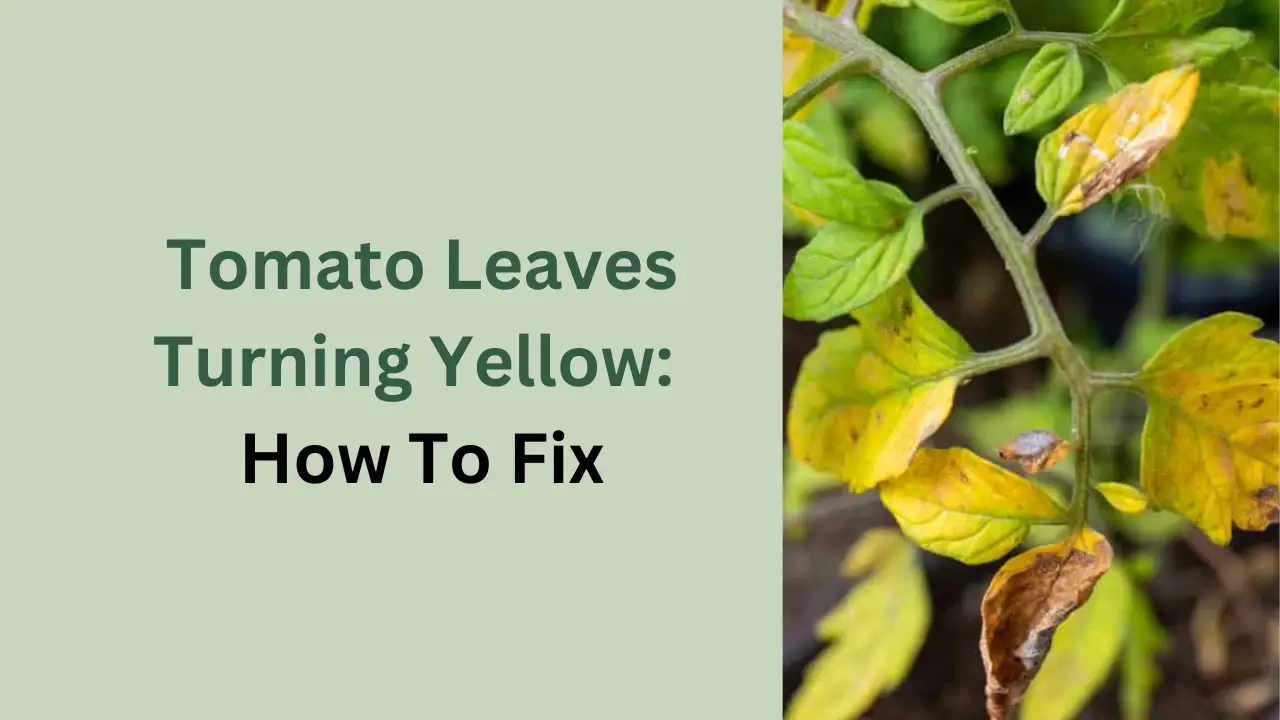In short, it is a common problem associated with tomato plants and can mostly be treated and taken care of using nitrogen-content fertilizer, nutritious soil, giving the right amount of water to the plants, protecting them from diseases, and fixing climatic stress protects the tomato leaves from discoloration.
Tomatoes plants are very delicate, and even a small mistake can make them struggle. Sometimes you might notice discoloration in their leaves.
It may involve several reasons like diseases, nutritionless soil, use of excessive fertilizers, too low nitrogen content in your soil, or unfavorable climatic conditions.
Why are the Leaves on My Tomatoes Turning Yellow?
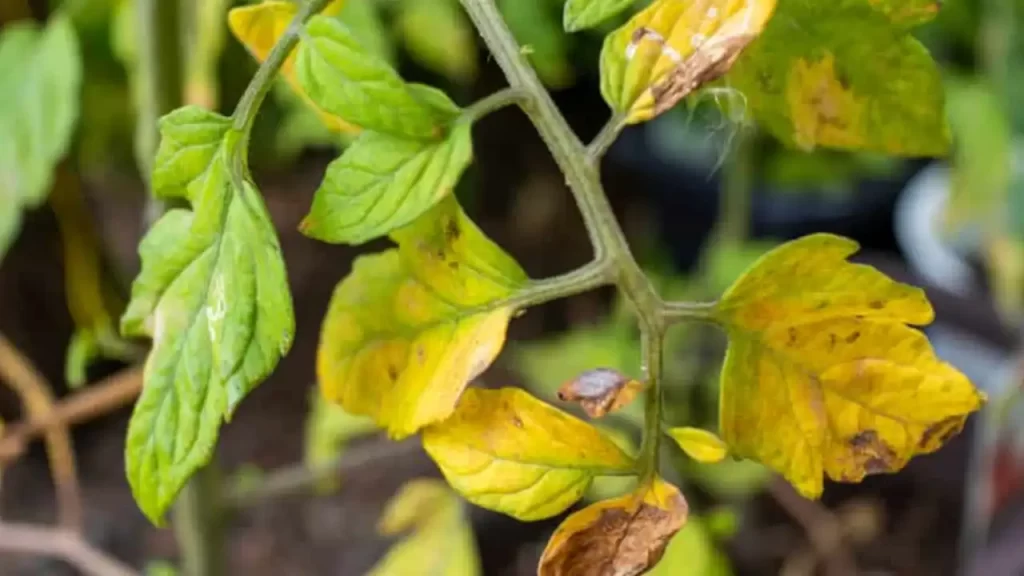
Yellowing of tomato leaves indicates various problems occurring in your plant. But it is a very common problem and needs to be handled patiently. Firstly we need to identify whether the problem is really big. At some points, the yellowing of tomato leaves is common.
- If you are planting new tomato plants directly from the pot in the garden, you can find yellow tomato leaves in their lower stem. This happens because in nurseries, they are grown in lesser space, and sometimes they are also grown in less nutrient soil.
They face a lack of sunlight due to high inch growth and are shaded by their neighboring plants. This also results in bad airflow facility; their lower leaves turn yellow and may be shaded afterward.
When you bring them and plant in a better environment with adequate space, nutrient soil, sunlight, and airflow, they grow normal leaves and come out as healthy plants.
But sometimes yellow tomato leaves may be due to some serious issues. They might have caught diseases from some other plants and may be contagious to your other plants.
So be sure to purchase only healthy, spotless, and green leafy plants from your nearby nursery.
- Sometimes transplant shock also leads to the yellowing of tomato plants. Do not rush to bring the baby plants into the outer environment. Wait at least two weeks after they reach the height of 2-3 inches. Proper hardening off the plant should be done to escape this problem.
Both points mentioned above are common and not so dangerous problems. You can resolve the problem after bringing the plants into an ideal environment.
The concerning reasons for yellowing tomato plants are inconsistent watering, less nutritious soil, too low nitrogen in the soil, and diseases.
8 Reasons For Yellow Tomato Leaves and How To Fix This!
Your tomato plant leaves may turn yellow for various reasons. I have listed the common 8 reasons why your Tomato Leaves are Turning Yellow and their solution.
#1 The Seed Leaves Are Turning Yellow

It is natural to get yellow leaves of the seeds; it is a plant development. Cotyledon leaves are first grown on the plant after germination, and their job is to provide nutrition to the plant. So they are not needed after this process is done.
At this stage, their color turns yellow, and the plants later shade them. At the same time, the tomato plants generate new leaves to provide the necessary nutrients to the plants.
How To Fix
As this is a natural process and part of the life cycle of the tomato plant, you cannot fix it. With the growth of tomato plants, seed leaves are shaded, and new leaves grow.
#2 Over or Under Watering
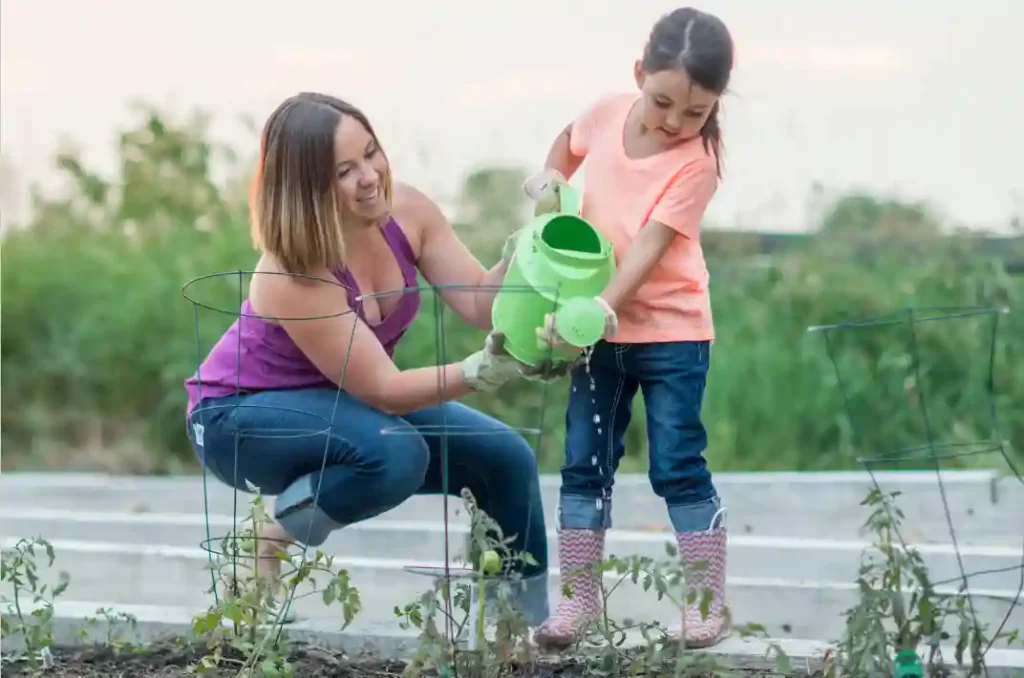
Water consistency is very important for tomato plants. Even after providing nutrient soil, leaf yellowing is noticed in the plans because the plant’s root can only deliver nutrients to the plant when watered in adequate amounts.
Ideally, 1 inch of water per week is needed in the plantation stage, and 2 inches of water per week is needed while the plant produce fruit.
Similarly, if the plant is flooded with water, it can cause root rot. The roots are soaked in the water and die soon if not drained on time. And the proper nutrients are not delivered to the plant, which causes yellow leaves on tomato plants.
How To Fix
I have listed some tips to handle the situation:
- During the plantation stage, you should water only when the surface is dry. A spray bottle for watering is best recommended as a limited amount of water is spread, and the risk of overwatering is also reduced.
- Consistent watering habits should be encouraged while transplanting tomato plants.
- Water plenty when the weather is too hot. Don’t let the soil lose its moisture.
- Avoid overhead water irrigation as the sun may damage the plants, and they become more prone to disease, rather, use a soaker hose to water your tomato plants.
- Be extra cautious while watering your potted tomato plant. They require twice as much watering per day.
- A deep irrigation system is proven to be more efficient than a sprinkler system. It also reduces the risk of diseases. If you cannot afford this, be extra cautious of the changing weather. Avoid watering during heavy rain and increase watering during hot weather.
#3 Transplant Shock
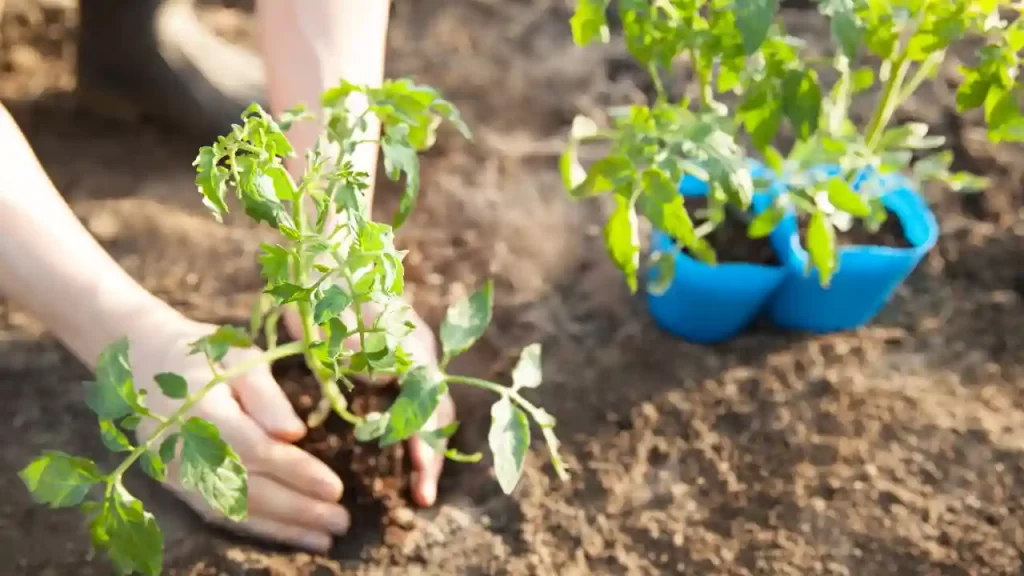
When newly transplanted tomato leaves turn yellow, it must be because of transplantation shock. They are very critical and delicate and get damaged easily when brought into a new environment.
Never break up the roots; even a small root break can result in leaf curling, yellowing leaves, and wilting.
Little transplant shock is normal and natural, and it gets recovered with correct watering techniques, soil nutrients, and regular plant care.
How To Fix
- Tomato roots are very delicate, so gently transplant them into the soil. Put the entire root ball and lower stem into the soil without touching the roots. Then put some soil in and water them properly.
- Do not stress if your baby plant is already undergoing transplant shock. Let it recover on its own.
#4 Poor Soil Aeration
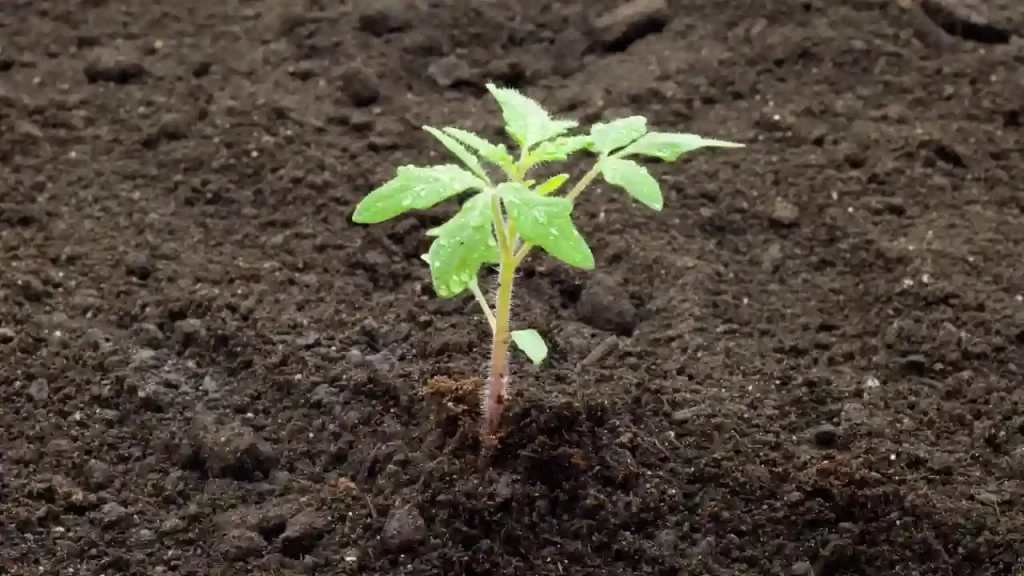
Poor soil Aeration is associated with a lack of oxygen in the soil. Due to this, the roots of tomato plants are suffocated and become inefficient in delivering the plant’s needs like water, oxygen, and nutrients to the entire plant.
As a result of which, the leaves start turning yellow. As the plants won’t get their food, it gets damaged and dies after a certain period.
The problem arises when the soil is too tight and never loosened. This creates uneasiness for the young roots. Walking around the near area of your plant can also raise this problem.
How To Fix
- Transplant your tomatoes in nutrient soil. While transplanting, dig 2-3 times to keep your soil aerated. Later, put some nutrient-enriched soil.
- A good garden naturally has aerating agents like worms. They keep the soil naturally aerated.
- If you are going through compaction, you can use aeration spikes. But mind this may cause harm to the root of the plants and may damage them. So be extra careful while doing the process. You can also opt to plant your tomatoes in a container. This will never raise the problem of soil compaction.
#5 Disease
Once your tomato plant catches a disease, you can’t cure it easily. So it is always best said that prevention is better than cure.
Not maintaining a good soil drainage system is the main reason for the spread of disease in tomato plants.
A few tomato diseases are briefly discussed below:
Early Blight
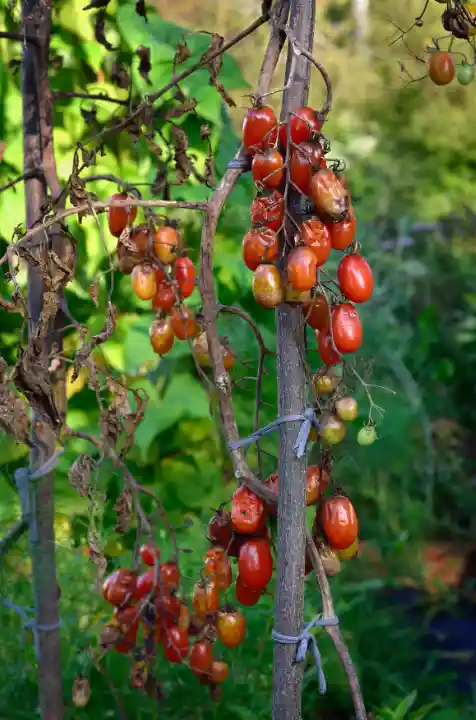
Blight is tiny in size, very hard to identify on the plants, and are also called plant lice, and they are generally found on older leaves.
They form a ring, round pattern spots, and create holes in the leaves. The near spot area of leaves turns yellowish. They damage more foliages in hot and humid weather.
They also damage the fruits, and infected fruits drop from the plants.
Prevention: The blight issue can be resolved to a certain extent by following the points below.
- Plantation should be done where direct sunlight exposure is available, especially in the morning sunlight. This would help the foliage to be dry.
- Avoid overhead watering, and do not water your plant in the afternoon time.
- Good quality and disease-free seeds should be used while the cultivation of tomatoes.
- Do not plant potatoes with tomatoes in the same garden.
- Discard the diseased plants and do not use them as compost.
Septoria Leaf Spot
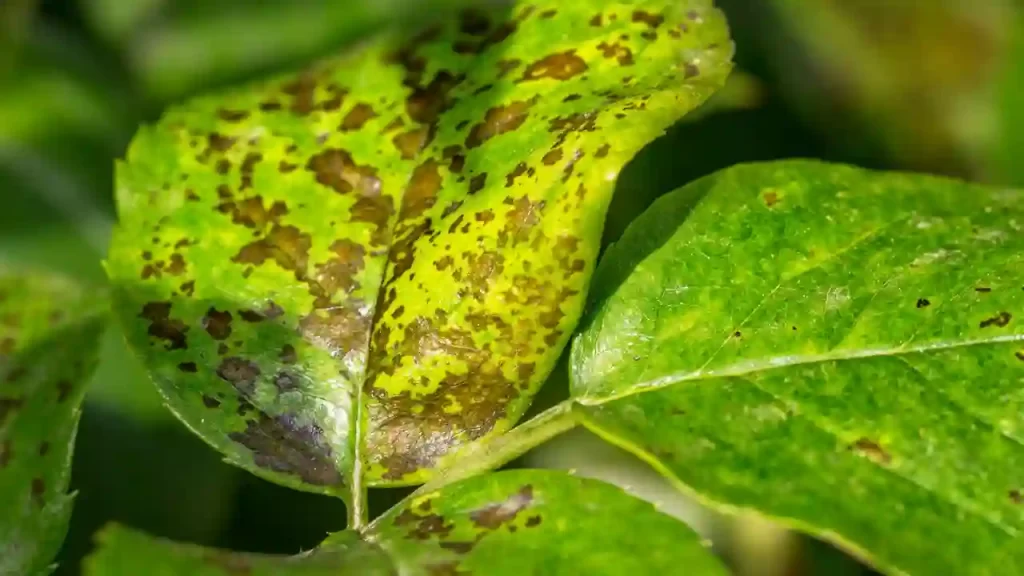
The Fungus Septoria Lycopersici causes septoria leaf Spots. The leaves, stems, and petioles of the plant are affected due to the disease, but the fruit is not affected.
The disease starts showing spots in the lower leaves when the fruits are set on the plant.
Older leaves are mostly attacked.
Small round spots with dark brown borders can be seen on the affected leaves. The affected leaves turn yellow and die after some time. The plants are more prone to get infected with this disease when the temperature is between 68-77 degrees F, and the plant remains wet due to rainfall or overhead irrigation. The ultimate goal of the disease is to reduce the quality of fruits, and a large number of fruit production weakens the plant and leads to sunscald.
Treatment:
Maintain at least three years of crop rotation. Avoid overhead irrigation of your tomato plant. The use of chlorothalonil or copper fungicides prevents this disease.
Fusarium Wilt
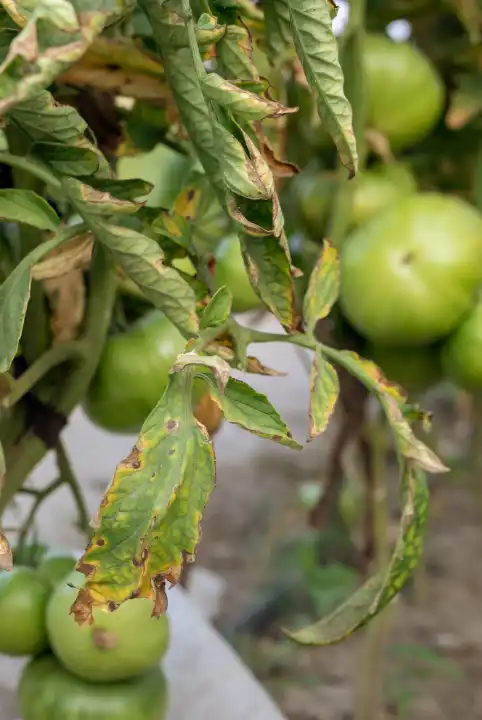
Fusarium oxysporum is responsible for the occurrence of Fusarium Wilt. They are more active in warm weather.
Their impact on small plants can be seen as the shedding and wilting of leaves, the green color of the plant starts to fade, and in the end, the plant may not survive and dies.
Generally, only one side of the affected leaves turns yellow. The stems are internally affected, and discoloration in the stem can only be seen when the stems are cut. This fungus is only born in the soil and transferred to the plants from its roots.
Treatment:
- Plantation should be done in soil free from pathogens.
- Maintain the pH level of the soil from 6.5 to 7.00.
- Use nitrate nitrogen like calcium nitrogen, and avoid using ammoniacal nitrogen. This helps in the prevention of the disease.
Verticillium Wilt (not found)
It is a soil-borne fungus caused by Verticillium Alboatrum. They are more prone to spread in the garden’s cooler northeast side.
Mainly the lower leaves are attacked and form yellow patches, then develop into brown spots and finally, they curl up and die.
Treatment:
The affected leaves cannot be cured. So you need to pull and discard the plant as soon as possible. It is a highly contagious disease and can be easily spread to other plants too. So never use the infected plant as compost.
#6 Nutrient Deficiency in Tomato Plants
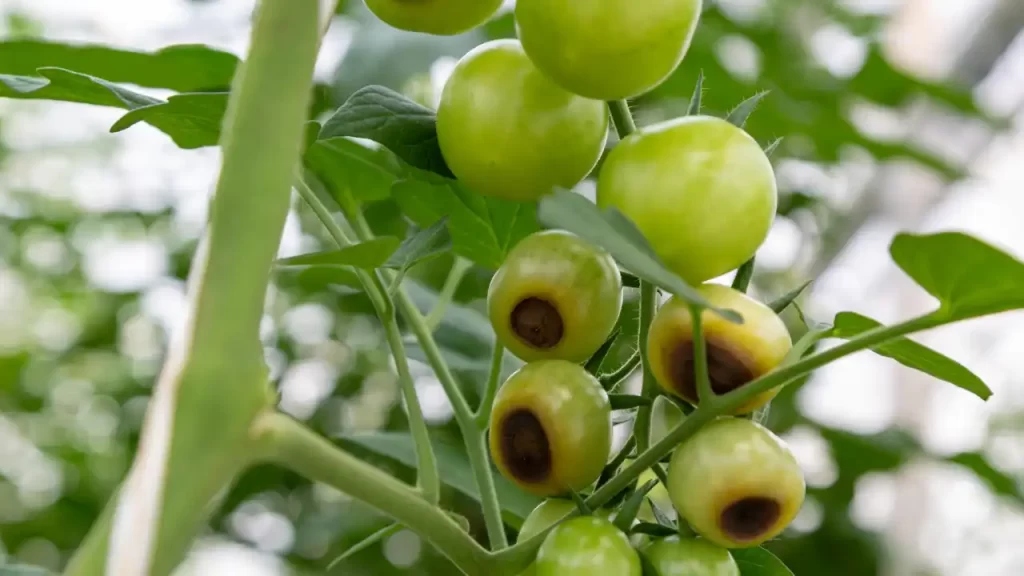
Yellow leaves in developed plants are a sign of nutrient deficiency. As tomatoes require a high amount of nutrients for their proper growth, they are known as heavy feeders.
Nitrogen, phosphorus, potassium, calcium, sulfur, magnesium, zinc, copper, and iron are needed for the complete and healthy growth of tomato plants.
Nitrogen deficiency is mainly responsible for the yellow leaves of tomato plants. But before providing a high dose of nitrogen, it is very important to identify which tomato plant is going through the deficiency of exactly which nutrient. Excess of any nutrient can harm your plant.
To identify the exact nutrient deficiency, check which part of the leaves is turning yellow, and it is also best to do soil tests to identify your plant is deficient in nutrients.
How To Fix
First, it is important to identify which part of the leaves is discoloring so you can understand the exact nutrition deficiency.
Yellow older leaves indicate a nutrient deficiency in nitrogen, potassium, and magnesium. Old lower leaves of the plant turn yellow.
Nitrogen deficiency is the main reason for the yellowing tomato leaves, and the whole leaf becomes yellow. Still, high nitrogen can only develop more leaves, and the plant has to compromise its production of flowers and fruits. So enrich your soil with the right amount of nitrogen to eliminate the problem.
When the leaf’s outer edge turns yellow, it is a symptom of potassium deficiency. Later the leaves turn brown. The use of potassium-rich fertilizers helps to better the leaves’ situation, and in turn life of the plant is also ensured.
Yellow leaves with green vines are signs of magnesium deficiency. Solution of Epsom Salt with water application would turn the yellow leaves into green almost within a week.
If new and younger leaves turn yellow, it is a sign of calcium and iron deficiency.
Calcium deficiency can also cause Blossom End Rot and discoloration of leaves in tomato plants. You can mix crushed Eggshell and shell meal in the soil to fulfill the calcium deficiency.
Iron deficiency can cause yellow leaves along with green veins. Apply 2 ounces of iron Sulfate with 3 to 5 ounces of water to eliminate iron deficiency in tomato plants.
Before doing any remedy, it is best and important to do a soil test. It would help to identify the nutrient deficiency and pH level of the soil. Fertilizers responsible for curing yellow color leaf should be only used.
#7 Pests
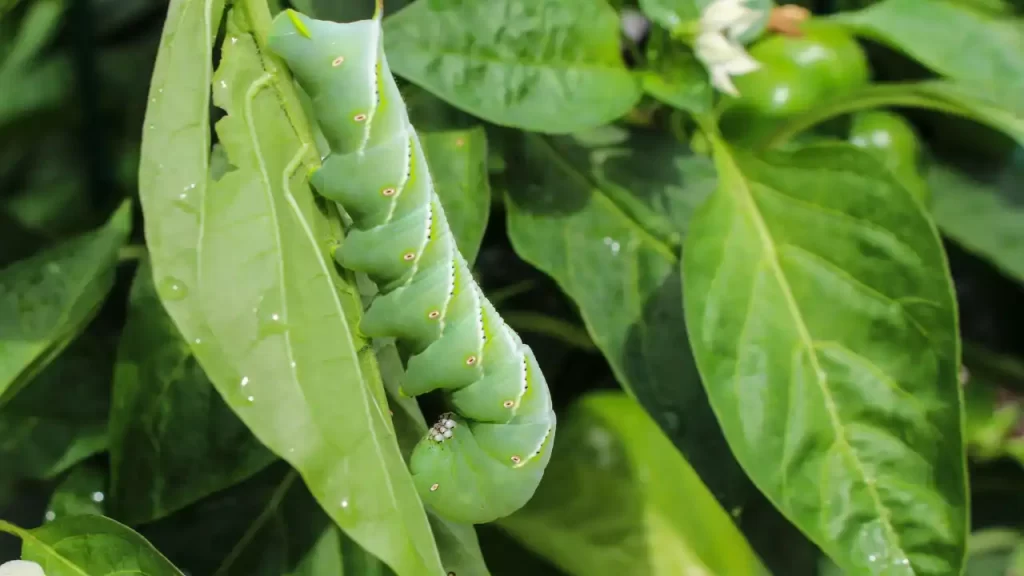
Tomato plants are more prone to attract pests, and some can cause the leaves to turn yellow. If you have identified any fungal disease or pests, You should take measures to control and resolve the issue.
How To Fix
- Go through your state extension program website regularly to check if any tomato health issues are general in your region.
- Healthy soil and crop soil rotation can help to reduce pests ultimately.
- Planting companion plants like pepper, garlic, and basil can also reduce the problem.
- Using neem oil in the evening once a week can also help solve the problem.
- The organic spray also helps to control pests.
#8 It’s the End of the Tomato Season
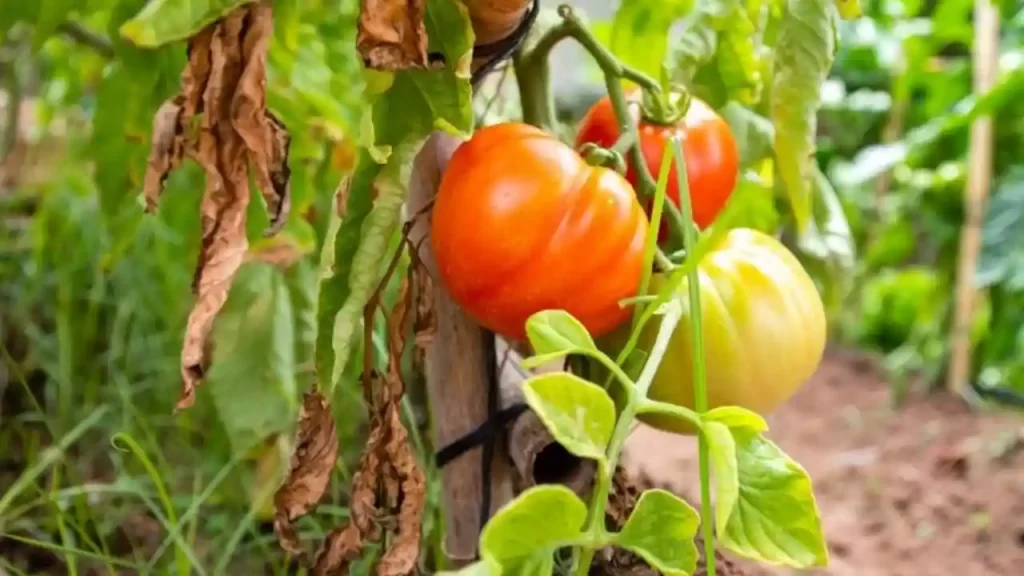
At the end of the season, it is quite natural for your tomato plants to turn yellow and fall from the plant.
When the leaves of tomato plants turn yellow or brown at the end of summer, it is part of the plant life cycle. Leaves help the plant to get their food.
Leaves responsibility is done when the plant sets fruit on it.
When you notice such a situation, it is better to prune the yellow leaves. It helps plants to utilize their energy in the development and ripening of fruits.
How To Fix
No remedy can be done as it is a natural process of the plants and part of their life cycle. Instead, you should be happy that your plant has successfully completed its task.
Final Thoughts
Yellow leaves on your plants may occur due to numerous reasons. So handle the situation patiently and try to identify its main reason, as discussed above in this article. Take measures to solve the issue, as you can resolve most of it.
Keep a closer look at your tomato plants to identify the pests or spread of fungal diseases when you observe tomato plants turning yellow.
